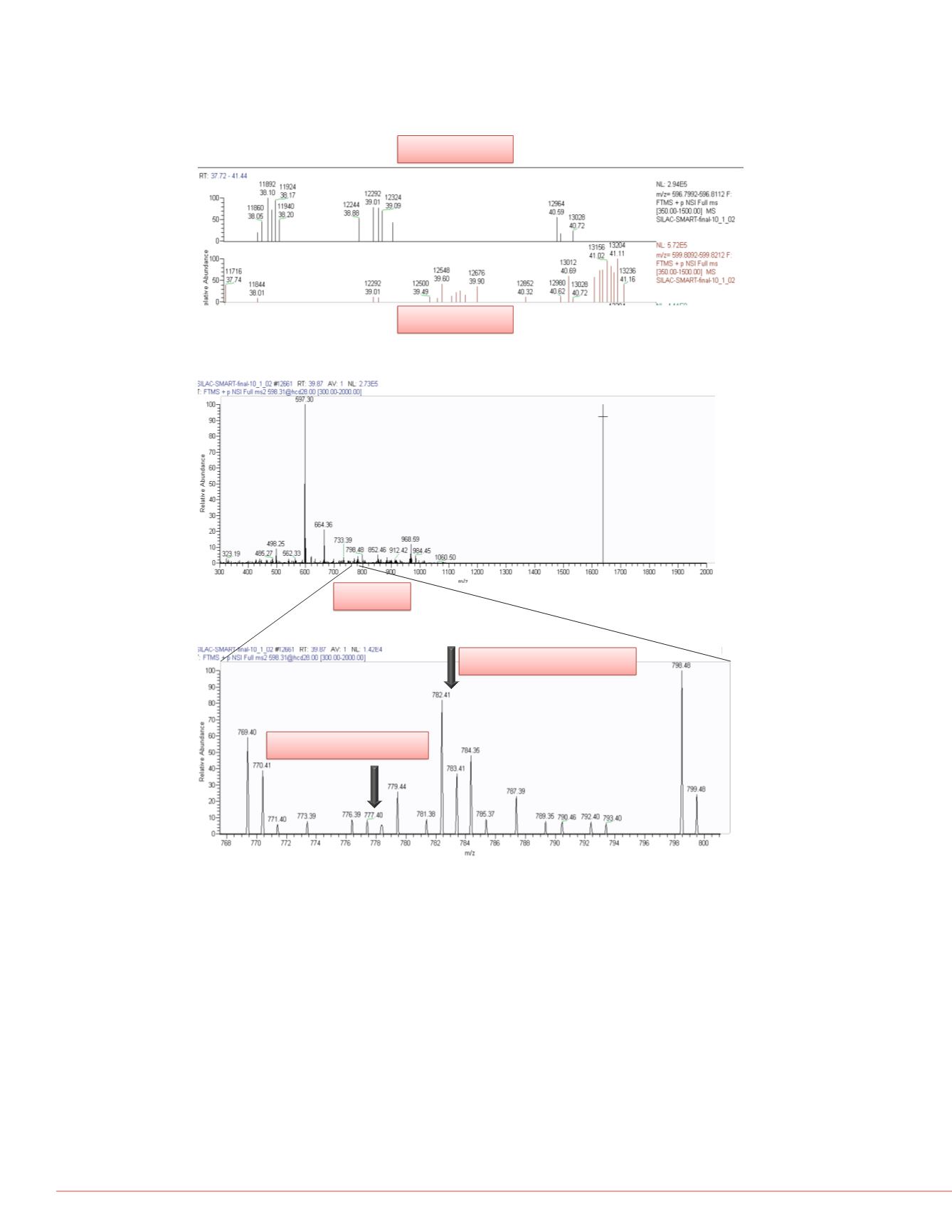

6
Improving Throughput for Targeted Quantification Methods by Intelligent Acquisition
Spectral
Library
Experimental
Spectrum
ant steps of method
oteins is relatively
rogate biomarkers
to uniquely identify
lly, retention times
ent cycle time to
method
e based on an
l spectral library
to build robust
ma (containing
re. Experiments
te unique product
quisition, but
antification. Figure 3
(by summing the
0
0-2
2-4
4-6
6-8
8-10
10-12
12-15
15-20
20-25
25+
missed
CV% Range
Conclusion
The developments here resulted in the successful qualitative/quantitative analysis for over
3,000 peptides representing over 2,000 proteins in this complex leukemia cell digest.
Successful quantification was determined for proteins spiked at over a 20-fold range and
the ability to change instrument acquisition parameters for increased analytical sensitivity.
References
1. Peptide retention standards and hydrophobicity indexes in reversed-phase high-
performance liquid chromatography of peptides. Krokhin et al., Analytical Chemistry
2009
.
All trademarks are the property of Thermo Fisher Scientific and its subsidiaries.
For Research Use Only. Not for use in diagnostic procedures.
This information is not intended to encourage use of these products in any manners that might infringe the intellectual
property rights of others.
d into the new
select unique
o perform real-time
chosen and 20-fold
calculated using the
S scan (panel B,
FIGURE 4. The benefit of MS/MS scan (with higher S/N) compared to full scan. Ratio
of 1:10 could not be calculated in full scan (panel A), but it could be calculated in
tandem MS/MS scan (panel C).
Light Channel
Heavy Channel
A
Zoom in
Product ion from heavy
Product ion from light
B
C



















